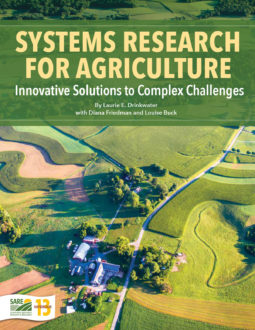Structural equation modeling (SEM) is an extension of the general linear model (GLM) and can be a more powerful alternative to multiple regression, path analysis, factor analysis, time-series analysis and analysis of covariance (Garson, 2010). An SEM model is essentially a composite hypothesis made up of a series of cause-and-effect relationships between variables using statistical dependencies (Shipley, 2000). SEM can account for additional complexities including nonlinearity, correlated independents, measurement error, correlated error terms and multiple latent variables. Latent variables are unobserved variables or factors that are measured by their respective indicators. For example, “quality of life” and “ecosystem resilience” represent complex characteristics that cannot be directly measured; these qualities are assessed using multiple traits as indicators.
Time-Series Analysis
Time-series analysis is a multivariate approach that uses sequential data to determine the relationship between time and one or more variables. There are many approaches to using time-series analysis, ranging from regression analysis of a single time series (where multiple variables are measured through time), to using structured equation modeling to analyze more than one time series consisting of the same measurements. Time-series analysis is an extremely valuable tool for analyzing long-term data sets and can be used to characterize temporal dynamics from a sequence of observations or to predict future values in the time series (Garson, 2010). Stronge et al. (1997) used time-series analysis of a 20-year data set to predict annual concentrations of NO3- in a lake surrounded by agricultural land. Their model determined the roles of climate variability and fertilizer use efficiency in driving nitrogen loss from drainage. The model showed that two climatic variables, rainfall from the previous summer and winter sun hours, were the most important drivers of NO3- leaching from agricultural landscapes. In a study focusing on management regime and biodiversity changes, Taylor and Morecroft (2009) analyzed 12 years of monitoring data to determine the effects of organic management on the diversity of plants and arthropods. Their time-series analysis of species abundance
trends before and after conversion to organic management showed that biodiversity of some groups (e.g., moths and butterflies) increased following changes in management regime.
In a soil nitrogen-mineralization study in a wheat field, de Ruiter et al. (1993) used SEM to analyze the contributions of different groups in the food web by simulating the deletion of ecologically significant groups of organisms from the soil ecosystem. They then measured the impact of the deletion of each group on nitrogen mineralization. The model showed that removing a group reduced overall nitrogen mineralization to a greater extent than would be expected based on the direct contribution of that group. Notably, amoebae and bacterivorous nematodes directly contributed to soil nitrogen mineralization at rates of 18 and 5 percent, respectively, but the deletion of amoebae or bacterivorous nematodes caused an overall reduction of nitrogen mineralization by 28 and 12 percent, respectively. These researchers used SEM to quantify the contributions of groups within the food web and to show that organisms function differently in simplified systems (here, incubations with a single group) than in a complex, intact system (in this case, a food web).
Path Analysis
Path analysis is a specific type of SEM that examines the strength of direct and indirect relationships among variables by disentangling causal processes (Lleras, 2005) and is the most commonly used SEM technique in the natural sciences. An extension of the regression model, path analysis requires the usual assumptions of regression (e.g., uncorrelated errors) and the use of representative samples. Path models do not prove causation but they provide information on the relationships (e.g., directionality/magnitude and strength of effects) among underlying processes in a system (Lleras, 2005). Path analysis tests the fit of a correlation matrix between two or more causal models, using observational data, with as many regression equations as deemed necessary by the researcher. Competing path models are evaluated by estimating and by assessing the goodness-of-fit statistics, and the model that best fits the observed correlation matrix is selected (Garson, 2005). Path analysis can be highly sensitive to model specification, and spurious inclusion of unnecessary variables can strongly affect results.
Bellino et al. (2015) used path analysis to better understand the ecological interactions of three years of applications of varying amounts of compost. These researchers drew inferences about the relationships among compost amendments, soil organic matter, nutrient concentrations, microbial activity and soil contamination. Using 13 hypothetical models, they found that potassium and zinc, microbial respiration and total polycyclic aromatic hydrocarbon concentrations were strong indicators of soil nutrient availability, microbial activity and organic contamination.
